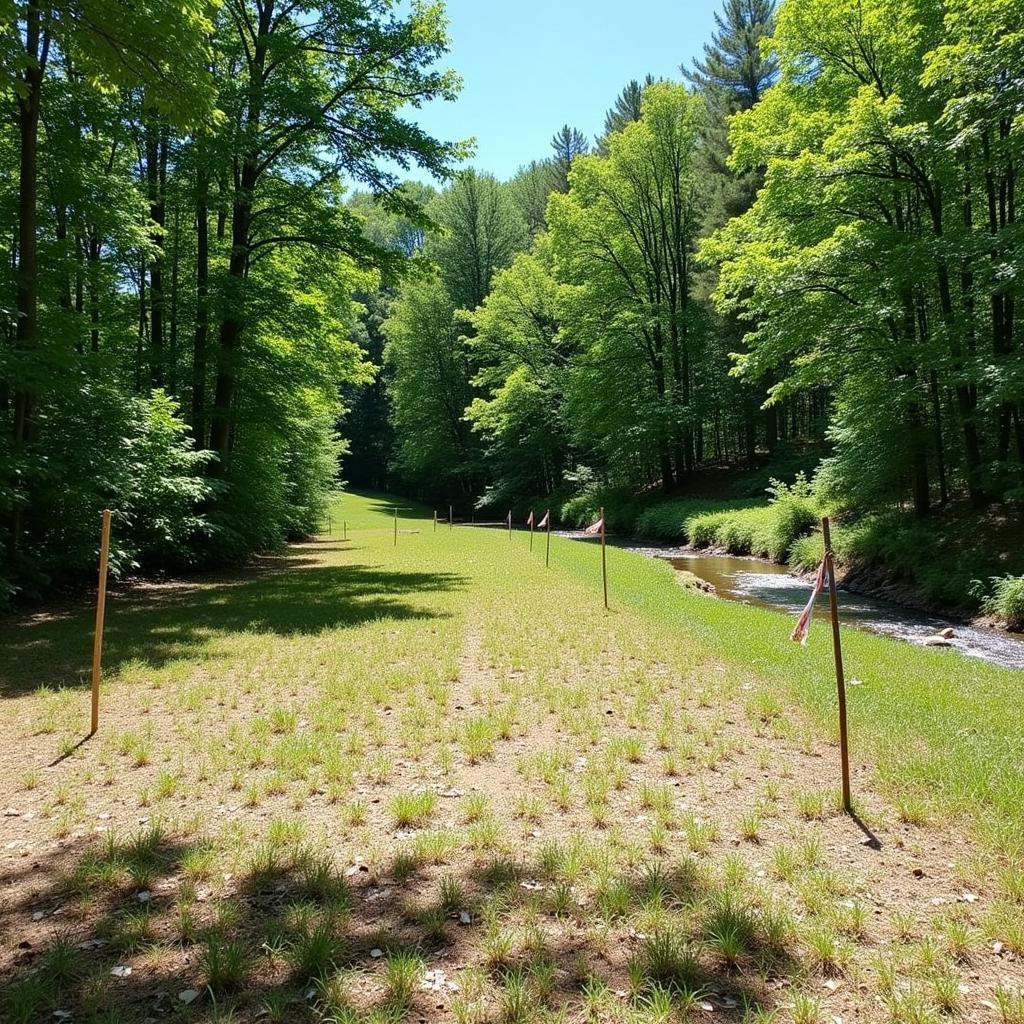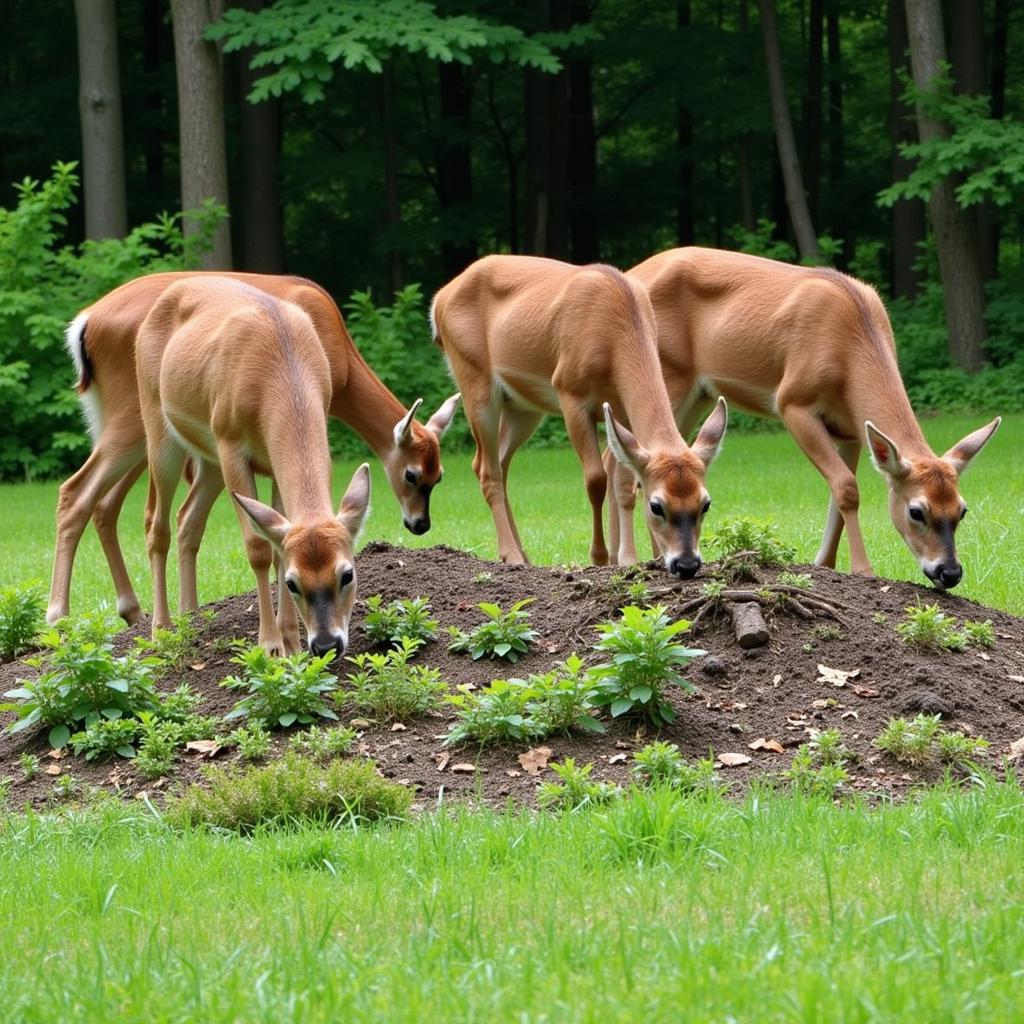Deer food plots in the woods are a crucial aspect of wildlife management, providing a supplemental food source that helps deer thrive, especially during lean times. A well-planned and maintained food plot can significantly improve the health of your local deer population and increase your chances of spotting these majestic creatures.
Food plots for deer in the woods require careful consideration of location, sunlight, soil conditions, and the type of forage planted. By understanding the deer’s dietary needs and the environment you’re working with, you can create a food plot that’s both beneficial for the deer and sustainable for the ecosystem. If you’re new to food plots, you might want to check out food plot design for deer for some helpful tips.
Choosing the Right Location for Your Deer Food Plot
The location of your deer food plot in the woods plays a vital role in its success. Ideally, you should choose a spot that receives at least four hours of sunlight each day. This ensures sufficient light for the forage to grow. Consider the terrain as well. A relatively flat or gently sloping area will make planting and maintenance easier. Areas near a water source are highly attractive to deer, making them ideal food plot locations.
You might find no-till food plots for deer to be a good option if you’re looking for a simpler planting method. This method is less disruptive to the soil and can be quite effective.
 Ideal Deer Food Plot Location in the Woods
Ideal Deer Food Plot Location in the Woods
Understanding Deer Dietary Needs
Deer are herbivores with varied dietary requirements depending on the season. During the spring and summer months, they prefer tender, leafy greens. In fall and winter, they shift towards more high-energy foods like grains and nuts. By planting a diverse mix of forage, you can provide a year-round food source. Clover and chicory food plots offer a nutritious blend that’s attractive to deer throughout much of the year.
Understanding these seasonal shifts can help you plan a food plot that caters to their specific needs at different times of the year.
Soil Preparation and Planting Techniques
Before planting your deer food plot in the woods, soil testing is essential. This helps you determine the pH level and nutrient content of the soil, allowing you to amend it accordingly. Lime and fertilizer can help balance the soil and provide the necessary nutrients for optimal forage growth.
Choosing the right planting method is also important. You can choose between traditional tilling or no-till methods. A food plot drill for sale can be a worthwhile investment, especially for larger plots. It ensures even seed distribution and improves germination rates.
Maintaining Your Deer Food Plot
Once planted, your deer food plot in the woods requires ongoing maintenance. Regular weeding is crucial to prevent competition with the desired forage. Controlling pests and diseases is also important. Monitoring the health of your food plot and making adjustments as needed will ensure its long-term success.
Maximizing the Benefits of Your Food Plot
Strategically placing your food plot near bedding areas or travel corridors can increase its effectiveness. Creating multiple smaller food plots, rather than one large one, can also be beneficial, distributing the food source and reducing competition among deer.
 Deer Feeding on a Food Plot
Deer Feeding on a Food Plot
Conclusion
Creating a successful deer food plot in the woods requires planning, effort, and ongoing management. By following these guidelines and considering the specific needs of your local deer population, you can contribute to a healthy and thriving deer herd while enjoying the satisfaction of seeing your efforts come to fruition. Remember that food plots for deer in the woods are an investment in the future of the local wildlife population.
FAQs
-
What is the best time to plant a deer food plot? Fall is generally the ideal time for planting many food plot species.
-
How large should a deer food plot be? The size depends on the land available and the deer population, but a plot between 1/4 and 1/2 acre is often recommended.
-
What are the best plants for a deer food plot? Clover, chicory, alfalfa, and various grains are popular choices.
-
How often should I fertilize my food plot? Fertilization requirements will vary depending on soil conditions and the type of forage planted.
-
Can I use a tractor for food plot preparation? Yes, a tractor can be helpful, especially for larger plots.
“A healthy deer population is a sign of a healthy ecosystem. By providing supplemental food sources, we’re not only helping the deer, but also contributing to the overall balance of nature,” says John Smith, Wildlife Biologist.
“Don’t underestimate the importance of soil testing. It’s the foundation of a successful food plot,” adds Jane Doe, experienced hunter and land manager.
For further information on optimizing your food plot, you might find our resources on food plot design for deer and no-till food plots for deer helpful.
Need help setting up your deer food plot? Contact us! Phone: 02437655121, Email: [email protected] Or visit us at: 3PGH+8R9, ĐT70A, thôn Trung, Bắc Từ Liêm, Hà Nội, Việt Nam. We have a 24/7 customer service team.